Cristian Vogel: “I’m not in need of advanced music theory - the computers I work with are doing a better job of figuring out what notes are coming next than I probably could”
The innovative producer on sound design and the making of his latest album, Rebirth of Wonky
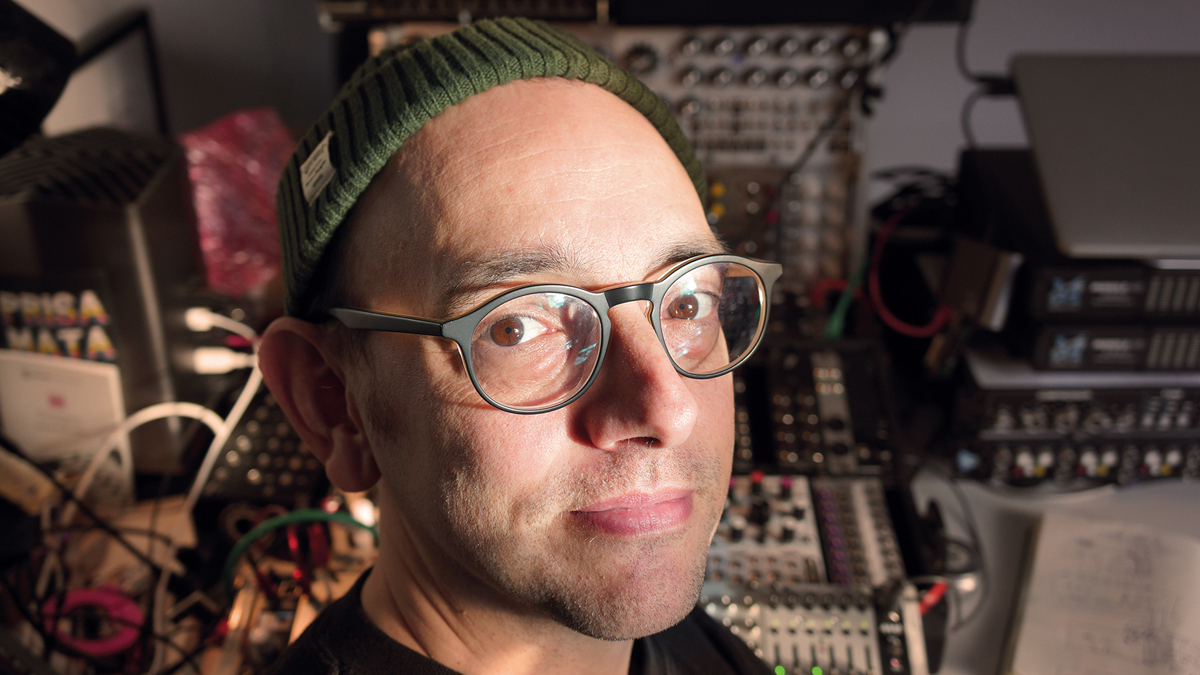
Born in Chile, raised in the UK and now situated in Copenhagen, Cristian Vogel immediately took an avant-garde approach to music production, as reflected in his debut techno album Beginning to Understand (1994).
Having carved out an innovative career in stage and club culture spanning three decades, Vogel’s innate curiosity for experimentation has now begun to move deftly beyond those confines.
An award-winning and highly experienced studio engineer, Vogel is a leading expert in the software environment Kyma - widely considered the Holy Grail of sound design.
With his latest album, The Rebirth of Wonky, the producer found himself forced to innovate within the parameters of a limited home studio setup. The result is a no less remarkable addition to what is an already visionary back catalogue.
it takes dedication and hard work and it’s always going to be like that whether you have blunt tools or amazing tools.
You graduated from the University of Sussex with a degree in 20th Century Music. What did that entail?
“It sounds a bit last century doesn’t it? At that time there wasn’t much music technology education in the UK. I’d already been self-taught using home computers and synths and put out a white label in 1992, but it was difficult.
“Ironically, 20th century modernism asks exactly those questions about whether you need to read and write music to become an accomplished musician. I found a course and got accepted on my enthusiasm for using gear rather than any musical qualifications and managed to blag the keys to the studio. I was there all day and night using their Akai S1000, Tascam mixing desk and tape machines, and taught myself to mix there.”
Want all the hottest music and gear news, reviews, deals, features and more, direct to your inbox? Sign up here.
Is being able to read and write music necessarily beneficial for people who make electronic music?
“To be a lifelong musician is a long road and a vast system, so you might not actually know what you’re supposed to be doing for quite some time. Taking the music conservatory route might be a career path that gets you into an orchestra or ensemble, but how can you know that’s what you’ll end up doing? You might prefer the freedom of jazz, where notes are handy but that’s not what makes the music come alive. In that sense, you’ll find it an obstacle if you can’t improvise because that’s not something they teach you at music school so much.
“But electronic music’s special because you’re not really working in a discrete pitch space anymore. I do touch on intervallic concepts like the quantisation of oscillators but I’m certainly not in need of advanced music theory or harmonic theory - the computers I work with are doing a better job of figuring out what notes are coming next than I probably could.”
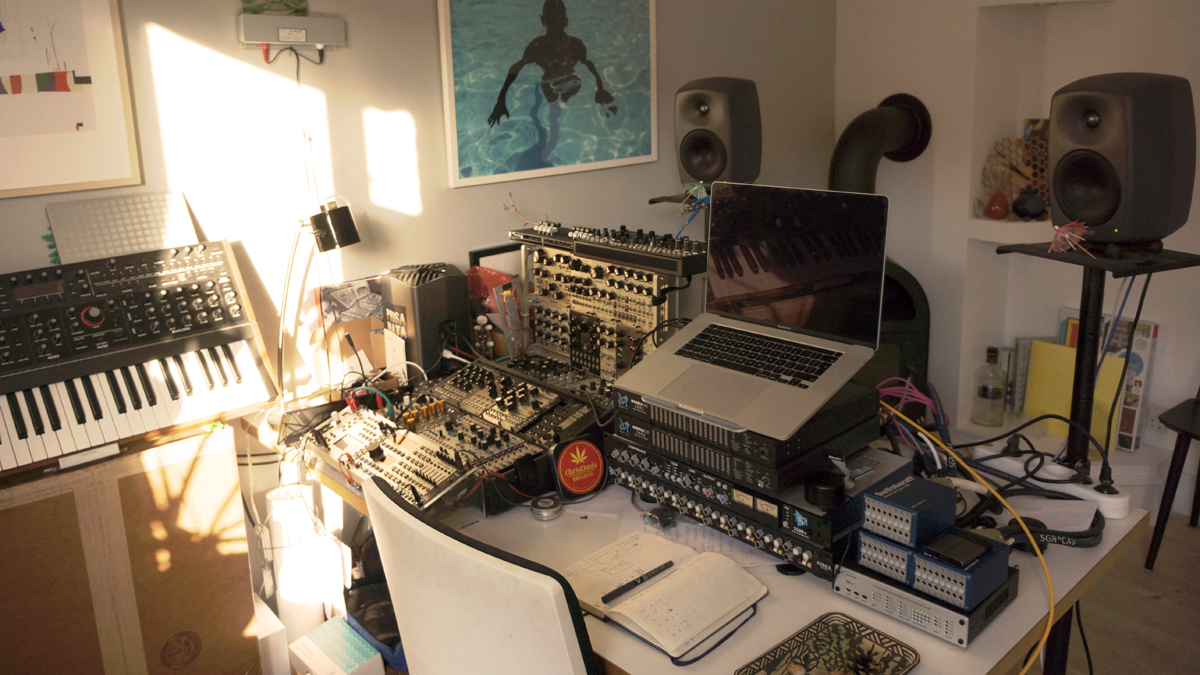
Your interest in sound has always had an innovative edge to it. When did you notice that first materialise?
“As a kid I remember it manifesting when I started to hit drums and play along to stuff. I found I was suddenly no longer able to listen to songs on the radio without isolating the drum playing, and the more I explored that, the more I started to differentiate all the signals in the mix.
“These days I like to call it sound innovating - the drive to always innovate in sound. It’s not necessarily about originality, that’s a different thing - it’s about creating new sound.
“In certain fields of music there’s more of an emphasis on that. For example, with electroacoustic music it’s an aesthetical definition that what you’re going to hear is going to blow your mind because the composer has arranged everything in such a way that it’s delivering a completely innovative musical narrative. Pop music is the exact opposite - it must be pretty hard to innovate in pop.”
Except perhaps for a producer like Trevor Horn who demonstrated an innovative approach that was highly influential…
“Yes, he’s a good example of an innovative producer even though he’s working with pop artists. He produced that album by Propaganda that opens with a really good recording of a coin spinning on a metal surface through a super-nice SSL channel strip. Why would he have brought that to the table? Maybe because he was listening to musique concrète where you’re learning to magnify sound in a particular way.”
Does your desire to learn new technological tools explain the six-year gap leading up to the release of The Rebirth of Wonky?
“I’d done stuff in between, mostly for my small and dedicated fan base, but when I was planning this album I was actually intending to go back to making something nostalgic - a certain dub techno with a Basic Channel feel and high-end production. I just felt I could get deeper with it, especially as I’ve got more hands-on with modular recently. But when the lockdowns happened that turned on its head because it didn’t feel relevant anymore and wasn’t a state of mind I wanted to be in. I still wanted to use the techniques I was going to apply; hence the title of the album, so it’s funny how things go.”
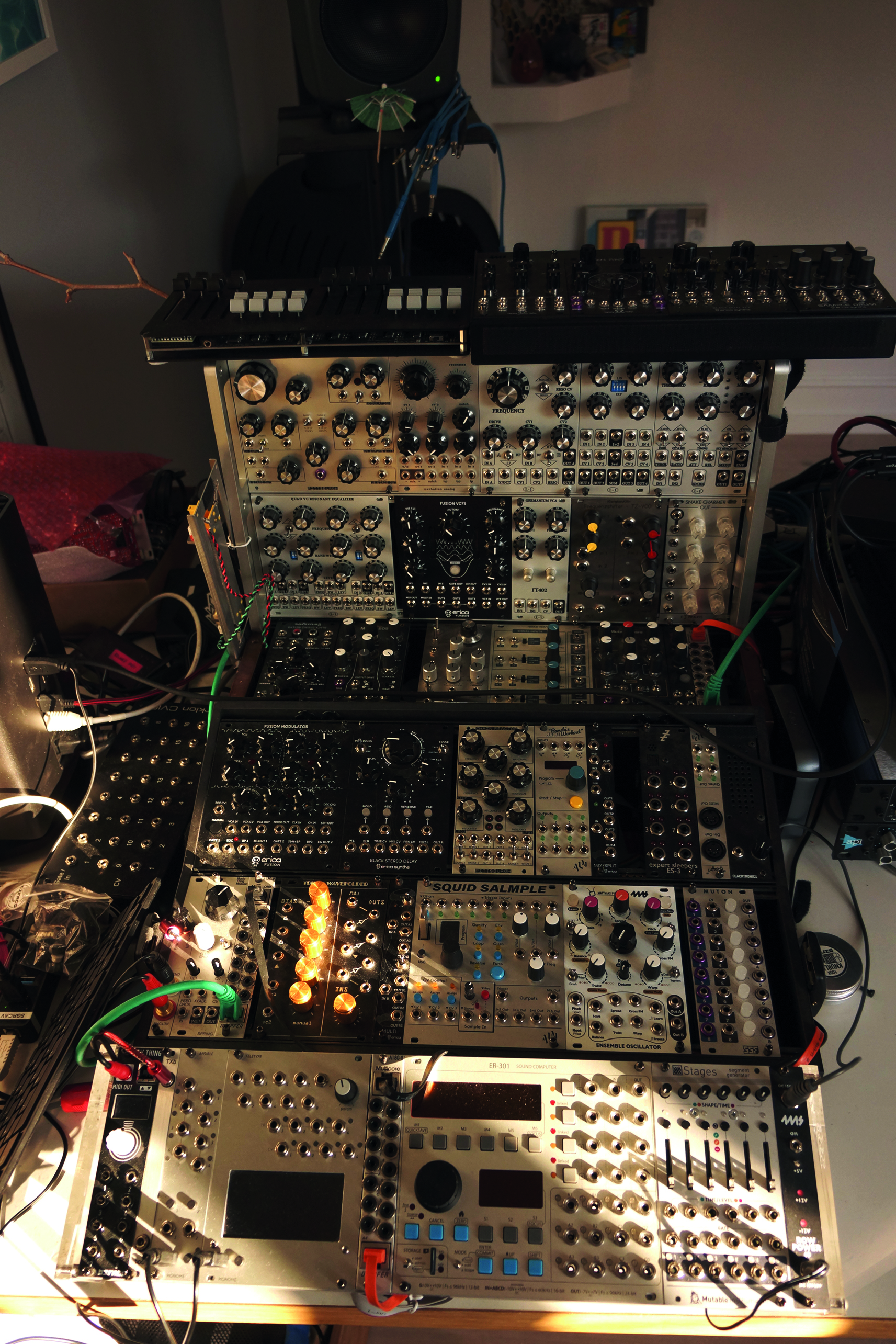
Is pushing the envelope something that you actively want to be known for?
“If you’re asking what’s the drive and incentive behind it I’m going to have to think about that. Obviously, I’m going to be making music until I drop on stage because there’s nothing else us musicians can really do.
“Looking back, I’d like to think I was known for continuously opening new pathways and being a bit of an explorer. I don’t think I’ll get a chance to write a good pop song. At times when I was broke my mum always used to say to me: ‘this approach that you’re talking about, you’re not going to make any serious money out of it’. I’ve always had years where I’ve done really well and others that are really down to lentils, rice and selling gear, but I like that because it’s decoupled from the economic ambitions that some people make music for. It is my career, but I’m not intending to have an executive salary here. In that sense, it frees me up to work at the edges.”
Does having a futuristic approach to sound become more difficult as technology becomes increasingly sophisticated and democratised?
“I tend to disagree with the point of view that anyone can do it with the technology that’s available. Yes, anyone can engage in the activity, but there’s a lot more to it than that. It’s like getting a gym subscription - you have the possibility of going to the gym, but you’re not going to become the Governor of California.
“What I like about the so-called democratisation of electronic music through technology is that it can open up something within people they might not have considered until they played with a plugin, for example becoming an audio programmer or making an electronic instrument. But like any creative pursuit, it takes dedication and hard work and it’s always going to be like that whether you have blunt tools or amazing tools.
“In terms of being futuristic, I think music is always futuristic by default. It’s a time-based medium that can also escape time because you can write it down, record it and create a capsule of human-based activity that’s sound-based.”
One path to differentiation would be to create software rather than just use it as it is. When did you first come across the Kyma sound design system?
“Kyma’s 30 years old but still quite relevant. It’s used in sound design for a bunch of Hollywood studios because it’s one of the best-sounding DSP platforms. Max/MSP and Reaktor are kind of close but they don’t have a separate hardware computer that’s doing music computation.
“From the beginning, Kyma came from this paradigm that we’re seeing a lot more of now - software and hardware that’s perfectly integrated. The hardware does the heavy lifting and the software is optimised for that - a good example being Orthogonal Devices’ ER-301: Sound Computer.
“A lot of these Eurorack modules are mini versions of that paradigm; custom-built software specifically optimised for hardware that is low-level but not cutting corners on the audio quality. Kyma was a high-end system of that, and its creators Symbolic Sound really believed that was the future for computer music-making. 30 years later, the systems are smaller but essentially doing the same thing.”
Whenabouts did you first start using it for sound design?
“I first got into Kyma in 2002 after working on a dance project on location in Switzerland where the musical score concept couldn’t be done with what was available. My idea was to have a continuous morph from the beginning sound that moved really slowly to an end state that was over 50 minutes length because that’s what I saw happening with the on-stage choreography.
“I started researching spectral transformation, re-synthesis and analysis, which was a vast learning experience, but I selected Kyma and convinced the dance company to pay a hefty price tag for it, promising it would be the most futuristic soundtrack ever made.”
I feel that something happened to club culture a while ago and it became a space where it’s quite hard to have an innovative experience in.
How did that go?
“The problem was that when it arrived a few weeks before the premiere I had to learn this entire programming language. I remember the choreographer coming over and saying, ‘right, so let’s see what this amazing box can do?’ I’d been sweating all day and just about managed to make it go ‘beeeeeeeeep’. Thankfully, within a few weeks of hard concentration it delivered an amazing result – the whole sound-morphing thing.”
Is Kyma open-source software?
“It’s actually not open source; it’s quite the opposite because it came from a different era. It’s actually quite straightforward to use unless you want to get more advanced with it. Over the past couple of years I’ve been moving over to proper C++ plugin development and trying to get into a position where I’ll just use Kyma as a prototyping platform.
“For me, I don’t really care how fancy the gooey is, if it’s not musical and doesn’t give you good sounds then what’s all the effort for?”
Could you give a practical example of something you’ve created with Kyma that you wouldn’t have been able to otherwise?
“The album Polyphonic Beings has quite a high-energy track called How Many Grapes Went Into That Wine, which is a bit of a rollercoaster ride. It’s a combination of vocal stab-type things, samples from ’70s garage records and drum sounds ripped from one of Photek’s records.
“Trying to sequence them all together to make an entirely new, continuously morphing rhythm structure was very much a combination of Kyma and my own musical underground culture. The drum hits and vocal samples sound the way they do because they’re not arbitrary choices. Of course, Kyma doesn’t decide that for you - what you put into the system is your own personal stamp, but I didn’t want to be punching patterns into sequencers ever again.”

Is the primary reason for your interest in generative music actually to help circumnavigate writer’s block?
“That’s definitely one of the really useful purposes of generating musical events algorithmically or via modulation. Algorithms are quite good because they do surprising things that you normally wouldn’t that you can edit and record, but you also get quite good at controlling those parameters and because it’s all done in real-time, in a certain sense you’re developing a skill.
“I saw a talk by a visual artist who uses generative algorithms in code to create animation and he used the term ‘shepherding’ randomness, where you’re just trying to get this random stuff into an interesting container. That’s how I toured for a long time. I’d go on stage with no prepared material, have the algorithms and clocks running and just do it. Sometimes that was amazing, other times not so amazing, but it was always fresh so I never got bored doing those shows.”
The album track Pendula sounds more like an organism than a song. Was that the aim?
“I used the Orthogonal Devices ER-301 module quite a bit on that. It’s a little sound computer for Eurorack that allows you to create immersive-sounding granulation and texture that you fall into. in that sense it could be an organism; almost as if you’re jumping into a lake that has its own intelligence.
“I love exploring micro sounds that are always in flux - I’m so immersed in it and find that the constant stimulation makes my ears happy. All of the texture is made from continuous, tiny little sounds where nothing is looping or repeating - as if you’re stirring particles of sound. I don’t know how other people feel when they listen to it, so thank you for giving me that response.”
Your work has a very technical component, but presumably there’s a desire to separate the technical from the creative so it doesn’t become an obstacle?
“That’s something I’ve often thought about over my 30-year career. For a few years I decided not to make any electronic music and play in a band. I thought that would get me away from technology and put me more in touch with the immediate, and it did for a while, but then it threw me all the way back. I realised I needed to play my synths like I’m playing a guitar and go with the flow instead of stopping and rewinding all the time. Now, if I get in a swamp because the gear is too difficult to use or I have to keep reading the manual, I just sell it.”
How did you approach the recording of the new album? Was it comforting to work within certain parameters or take the opposite approach?
“My partner is an accomplished composer and sound creator and we share a studio, so when it looked like we were going to get locked down we realised that one of us couldn’t live in the studio and figured out that I’d have to build my own setup in the house. From that perspective I had to quite carefully select what modules, synths and outboard I wanted to take.”
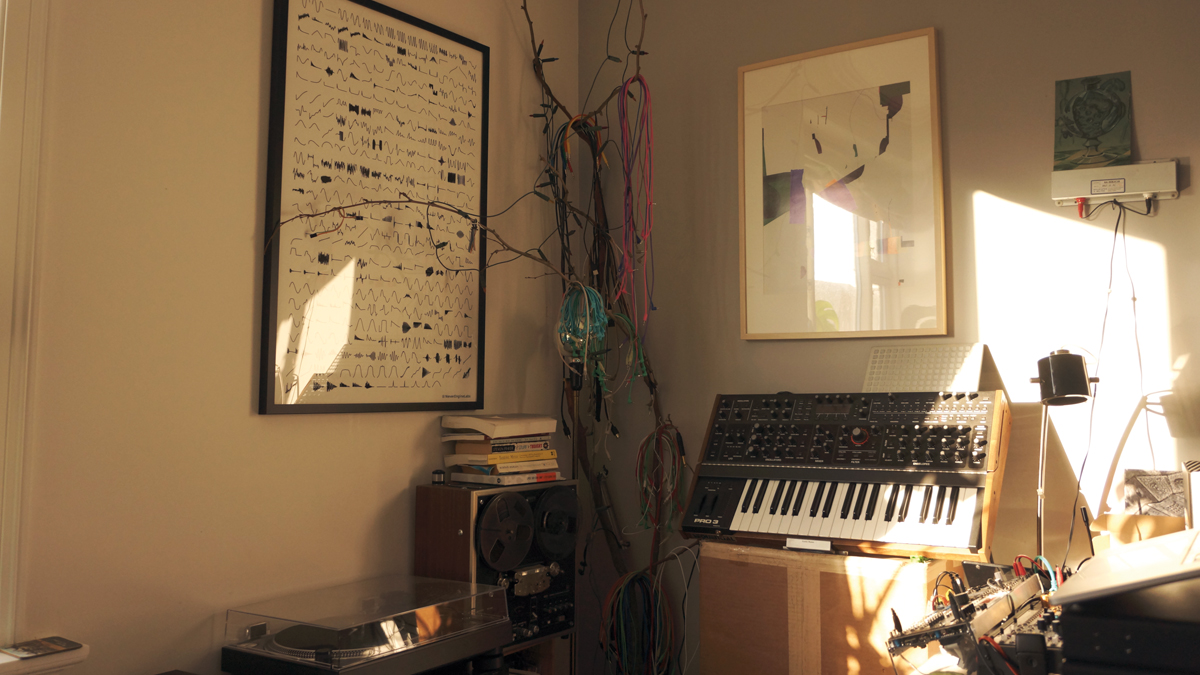
What did that setup comprise of?
“Three cases of Eurorack and the Sequential Circuits Pro 3, which had only just been released at the time. I loved my Pro 1, which I had to sell during one of my low periods, but the Pro 3 still has that DNA.
“The lights are way too bright, so I wrote to them and said, hey man, can I turn the LEDs down? They said no, so I figured out that if I wore shades it would be alright. Then I needed some outboard because I couldn’t use my Calrec Broadcast Mixer, but I was really lucky to get an API 8200 rack from a second-hand auction. I also got some Metric Halo digital EQs, which for me are the best sounding ones, and a bus compressor. Knowing there wasn’t going to be any gigs, I basically invested the last of my savings, and that’s how I made the album.”
Did you learn anything from the experience of using a more limited setup?
“I learned that even when you really don’t feel like anything’s going to come [out of your current session], you need to continue with that distraction-free, away from all the emails and socials. I tried not to judge or value the music and just did my scales. Even the greatest jazz musicians at the height of their profession do their scales because they represent an exploration of your workflow.
“Even if you’re using one module, you need to discover the range of its expression and those exercises are really important even if you don’t feel a big track’s coming because when it comes down to making an actual piece of music it’s important to feel like you’re in control of everything that’s going on.”
Some people are frightened to even approach modular recording for the reasons you’ve expressed…
“You’re absolutely right, it’s a common criticism that you’ll just sit there noodling all day. I don’t think there’s necessarily anything wrong with that, but if you want to be productive and get an album done, you need to learn how to get that complexity under control. It goes back to that shepherding idea. ”
Do you have any tips for using modular without the need for noodling?
“When patching just find four points, or four choreographed moves, that you know how to move away from and move back to - then start recording. Just learning that is how you’ll get hold of all the parameters.
“The problem with recording an hour-long jam for editing later is that you’ve got to listen back to it for an hour at least, and that’s going to exponentially increase the process. That’s why I believe my technique is always going to be more productive because you’ve got points of structure to prevent the music from going where you don’t want it to go. When you get really good at it, you’ll just rewind a live take, listen and say, yep, that’s it!”
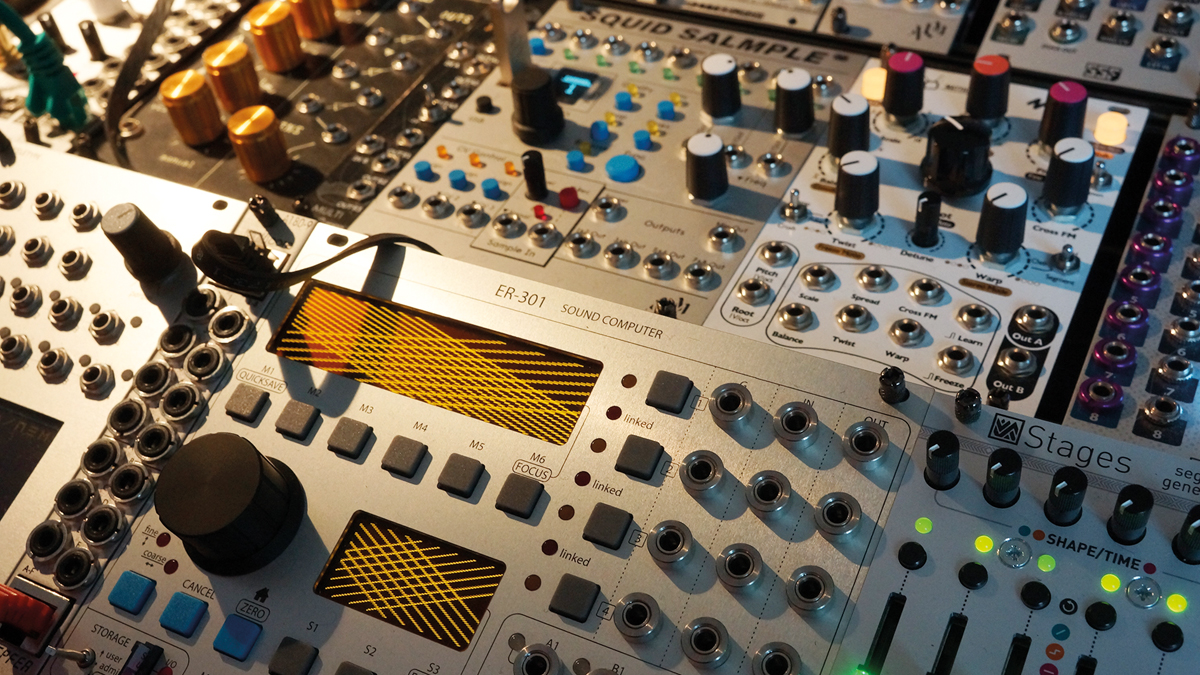
What modules are exciting you at present?
“I’m very much into the Monome family of stuff, particularly the Teletype, which is like a little computer for doing CV signals, and I love the ALM Squid Salmple – an 8-channel sampler that has the spirit of rave. It’s great fun because you don’t have to do too much editing.
“I’m generally quite into stuff that I know is very difficult to do in software and there’s quite a few of those things in Eurorack like the L-1 Germanium VCA, which is an insane distortion. I’m always mad about analogue frequency shifters and filters because they’re so difficult to model. I’m using the first edition of the Expert Sleepers ADAT connection for Eurorack so I can filter the modular by hand rather than using an automated digital filter.”
Do you feel like you’ve outgrown club culture now and that your music is speaking to a different audience?
“Yes. I feel that something happened to club culture a while ago and it became a space where it’s quite hard to have an innovative experience in. It’s not that I’m too old for it, I just don’t feel I’ve got anything to explore there anymore.”
The Rebirth of Wonky certainly sees you move away from that culture. How do you see that developing in the short term?
“Club culture has been hugely important in terms of the development of electronic music, but when you take it away from the music, it can continue to have beats and energy. You don’t have to dance to it, but you can listen to it in a different context.
“With that in mind, I’m going to author sound walks in cities around the world from my computer here in Copenhagen. For people who want to make that commitment, there’s an app you can download on my website. All you’ll need to do is get the app, go out to the start of the walk, put your headphones on and you’ll hear the album and all sorts of other special stuff. That’ll be coming out a week before the official release.”
Cristian Vogel’s new album The Rebirth of Wonky is out now on Endless Process Records.


Future Music is the number one magazine for today's producers. Packed with technique and technology we'll help you make great new music. All-access artist interviews, in-depth gear reviews, essential production tutorials and much more. Every marvellous monthly edition features reliable reviews of the latest and greatest hardware and software technology and techniques, unparalleled advice, in-depth interviews, sensational free samples and so much more to improve the experience and outcome of your music-making.
